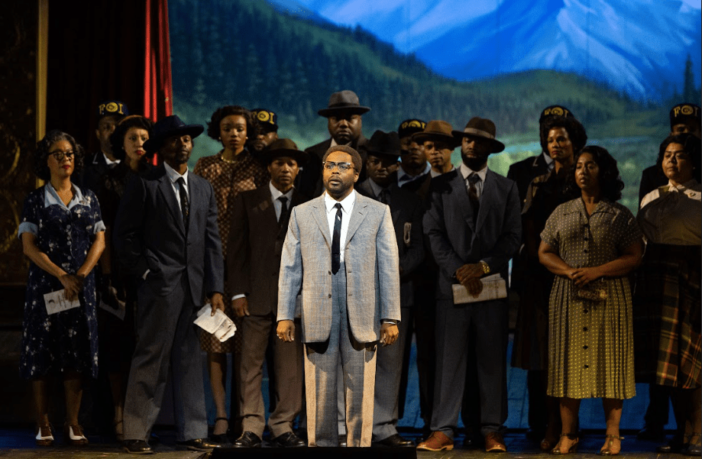A few years ago, there was a series of Dos Equis beer commercials that announced “the most interesting man in the world” and bragged that his reputation was expanding faster than the universe. Kazem Abdullah does not, for a moment, subscribe to being the most interesting man in the world, but consider these facts: He was born in Indianapolis 44 years ago on July the Fourth, with an Arabic birthname bestowed on him by parents from Sierra Leone; was raised in Dayton; became a world-class clarinetist, with a long current residency in Germany; and, perhaps most interestingly, is a Black man with a baton, not one in a track relay, but on the podium in front of major orchestras.
Beginning on November 3 through December 2 at the Met, Abdullah will conduct the latest iteration of “X: The Life and Times of Malcolm X.”
During a phone interview before my attendance at a rehearsal, Abdullah divulged a portion of his impressive résumé, including an extensive discussion of jazz and how it relates to the X opera.
“What I like most about the opera is the extent to which the composer Anthony Davis has incorporated jazz into Malcolm’s life,” he said. “And as the music matures from the 1920s to the 1960s, so does Malcolm. His story is truly an American story.”
Malcolm’s story has international implications, too, some of which emerge in the production that I was able to witness a week before its launch at the Met on November 3. Abdullah’s comments on jazz and how it’s woven into the opera are certainly true, but other African American genres are also present, depending on the historical era depicted.
The blues continuum surfaces throughout the performance and is most prominent when it accompanies Malcolm’s mother, Louise Little (Leah Hawkins), in her lament on learning of the death of her husband.
When she repeats the number of Klansmen accused of killing her beloved Earl, the mournful music echoes her words: “A boy born in terror, marked by our fear. Not four, not 10; so many men rushing in a Black man’s night.” Their intimations are of Sterling Brown’s poem “Old Lem,” where he wrote, “They don’t come by ones. They don’t come by twos. But they come by tens.”
The score becomes a blend of swing and bebop when Malcolm is lindy-hopping or boogying in the nightspots. Abdullah appears to signal to the bassist to emphasize the beat.
It is during this scene that the choreography takes command, although it weaves almost seamlessly from episode to episode, whether in the beginning where the dancers convey the festive arrival of young Malcolm to the crowd outside the Littles’ home where they capture the sadness of Earl’s murder.
Those who experienced the original version 36 years ago may recall some of the scenes, but as librettist Thulani Davis promised, there are some changes, most notably the length of the opera. There also seemed to be more intentional rhyming in this iteration, and a little more rapping, particularly during the solos by Malcolm (baritone Will Liverman), but Victor Ryan Robertson as Elijah Muhammad has the show-stopping moments—a latter-day Cab Calloway.
Rehearsals, as some of you may know, often contain a number of stops and restarts, and this one had several; even so, there was enough to glean the opera’s potential. The choreography is a practically unbroken tapestry of movement; the lighting and images that embellish the actors are like another performer; and always in the background was a bold, unannounced sense of pageantry.
Some semblance of the opera’s often snapping rhythm was evident when watching composer Anthony Davis walking around the theater, now and then with body gestures capturing the tempo and surge of sound from the orchestra’s pit.
The shifting cadences and modulations were controlled admirably by Abdullah’s magic baton, and there was his way of signaling to the players to tone down or intensify their sound. There were moments when memories of “Porgy and Bess” surfaced, and then “West Side Story,” but as Abdullah reminded me during the interview, this is Malcolm’s story, “Malcolm’s musical.”
To that extent, let’s reserve the rest of the review until we are back in the theater for the debut on November 3.
Like this:
Like Loading…



